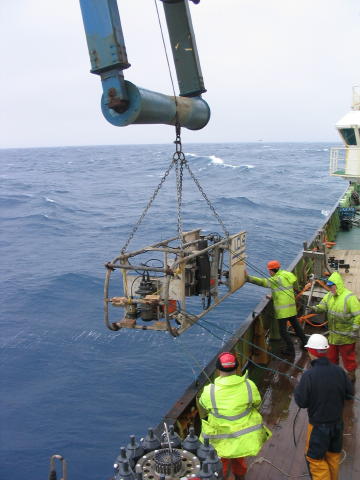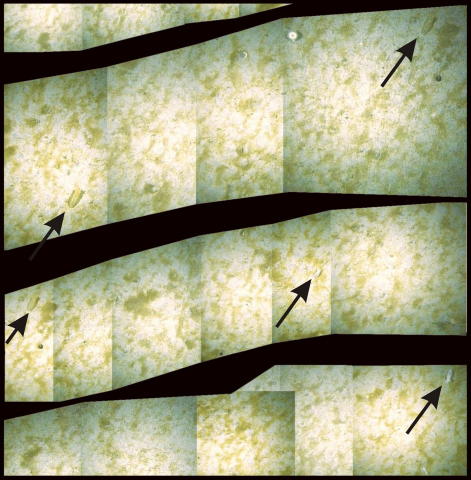Crozet Cruising 4/1/2006
The Importance of Photographs and Videos!
Over recent years, deep-sea scientists have
developed a plethora of new techniques that allow a better
visualisation of the abyssal environment. In the past, scientists
have had to rely on the collection of material by “blind”
trawling, dredging and grabbing material from the sea floor.
Photography, or rather the technology that allows photographs
and videos to be taken at kilometre depths, was first developed
in the 1960’s, but since the development of digital
and computer technology in the last 20 years, there has
been an explosion in its successful exploitation in deep-sea
research. It is now possible to send remotely operated vehicles
(ROVs) to many kilometres depth (the lost Kiako was rated
up to 11000 m) and to obtain fantastic real time video of
creatures and features at the sea floor. On this cruise,
we don’t have that capability and are relying on some
older methodologies, nevertheless, we are able to obtain
good images of the sea floor and animals living there.
WASP (Wide-Angle Seafloor Photography) has
been really valuable on Benthic Crozet and has shown how
different the sea floor is at M5 and M6. WASP itself has
two camera systems, video and still, which employ an altimeter
to switch them on automatically when they are within 10
metres of the sea floor. WASP is flown on a wire, ideally,
at about 2 metres above the sea floor; this is not easy
to achieve when there is a large swell, as is often the
case at Crozet and the resulting video can induce sea-sickness!
 WASP launching
WASP launching |
The field of view from each frame of video (at 2 metres above
the sea floor) is approximately 2 m2. Knowing this
and the distance of travel allows us to estimate the
total area covered by a photographic or video sequence.
Then by counting the animals, we can estimate biological
abundance data. This is more reliable than, for example,
trawl data, where there are inevitable losses and
uncertainties, for example of the area of sea floor
covered. However, identification of animals can be
a problem and anything smaller than 1 cm is unlikely
to be spotted. |
The montage shown below is taken from capture
of video images and shows the transit of WASP across the
sea floor at M5. Notice the patches of green phytodetritus
mentioned in previous blogs (14/12
and 20/12). Of note in this sequence
(see arrows) are the holothurians, probably Peniagone
sp. which dominated the trawl catches and Amperima
sp.. Notice that they all point in the same direction,
suggesting a relationship with the bottom water current.
Careful inspection of the photographs back at home will
allow us to be more positive about identification of these
and the many other animals that are visible.

M5 montage